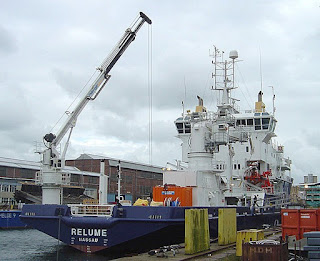This equipment vary in configuration from manlift category, where the machines are used for lifting personnel, providing parts which can be elevated in which they can work for the type of forklift, and a variety of cranes to lift special equipment such as pipelayers.
Lifting and lifting involves special considerations, such as the engine capacity on certain radius conditions, wind speed, and the land given load. Over the past few years, many tools have been developed personnel carrier, starting with just a boom angle indicator for load measurement indicators and tools on a computer screen.
Transporting and lifting equipment has also grown in size over the years, and when the equipment is capable of making large size with relative ease movement from one job to another, especially when compared with equipment in the past.
Some examples of heavy equipment lifter is:
Lifting and lifting involves special considerations, such as the engine capacity on certain radius conditions, wind speed, and the land given load. Over the past few years, many tools have been developed personnel carrier, starting with just a boom angle indicator for load measurement indicators and tools on a computer screen.
Transporting and lifting equipment has also grown in size over the years, and when the equipment is capable of making large size with relative ease movement from one job to another, especially when compared with equipment in the past.
Some examples of heavy equipment lifter is:
Boom Truck
Boom truck is basically a truck with a crane unit mounted on both to allow the loading and unloading of the load both to and from the boom truck itself or adjacent truck. Outriggers that extend horizontally and vertically can be used for multi-level and stabilize the crane for lifting.
The main focus of bridge inspection unit is to perform safety inspections on the bridge, the bridge load ratings preparing and verifying the accuracy of the load buffer. This special vehicle allows for inspection of the bottom of the bridge while the vehicle itself is positioned on top of the bridge.
Bucket Truck
Basket or cherry picker truck was originally designed for use in the garden (though not only in cherry orchard) where they are still widely used today. Basket truck will have full control on both the truck and into the basket for the operator itself.
Container Handler
Container handlers capable of transporting containers within a short distance very fast and menumpukannya in different lines depending on the desired access.
Cranes
Cranes exist in many variations, forms each adapted to a particular use. Range in size from the smallest jib cranes used inside workshops to the tallest tower cranes, which are used to build tall buildings.
Crawler Conventional
A conventional crawler crane is a crane that has a lattice boom on his body with a foot track. When working at the jobsite, the weight can be added to stabilize the crane before the lift. Crawler crane has advantages and disadvantages depending on its use. Its main advantage is that they can move around and make every job with minimal set-up. In addition, crawler crane capable of traveling with his load. Because this crane is on track, they must be transported from the workplace to workplace.
Crawler Hydraulic
A hydraulic crawler crane is a hydraulic crane with a body foot track. When working at the jobsite, the weights can be added to stabilize the crane when stationary and lifting.
Ship Mounted Crane
Located in ships and boats, this tool is used for the operation or the boat unloading cargo and taking that where there is a loading and unloading facilities are available. Most diesel-hydraulic or electric-hydraulic.
Rough Terrain
A crane mounted on an undercarriage with four tires that are designed for use on surgical removal and off-road terrain ("rough terrain"). Outriggers are used to elongate and stabilize the crane for lifting.
Forklift
Forklift or lift truck, is a powered industrial truck used to lift and transport materials. Modern forklift was developed in the 1920s by various companies. And can be powered either by, diesel, gasoline, propane or electric batteries. Different features enhance the functionality of the forklift.
Straight Boom
Straight boom lifts are typically used for jobs requiring a high reach without obstructions. Turntable machine can rotate 360 degrees with a boom that can be extended to be raised vertically downwards or horizontally. The operator can maneuver and steer the vehicle when the boom is fully extended. Currently available in gas, propane, or diesel models with two or four-wheel drive.
Scissor Lift
Scissor lifts designed to work on projects at the top of the head because of this type is only lifted in a vertical plane. Tool consists of a series of related patterns, supports crease patterned 'x'. In a way to improve this unit, the pressure must be done outside of the lowest set, which extends the pattern of intersections, a vertical platform lift. If the engine-powered hydraulic or pneumatic it means lowering the platform can be done simply by opening the valve to release the pressure.
Pipelayers (Side Boom)
Pipelayers has been around since the 1920s from various companies making sideboom equipment for crawler tractors. In 1953, Midwestern sideboom introduced the world's first hydraulic operated for a small tractor. Currently, some companies sell pipelayer that has been integrated.
Rigging
When the weight and capacity is known, then the rigger then must determine how to lift weights so stable. Training and experience allows riggers to recognize the dangers that can have an impact on when operating the unit. Riggers should have to know the elements that can affect the safety of the unit, factors that reduce capacity, and safe practices in the rigging, lifting, and more.














I would like to say that your blog is well-written and it contains lots of useful and up-to-date information. This has really made me think and I hope to read more. I am hoping the same best work from you in the future as well.
ReplyDeletetower cranes for sale australia
Post a Comment